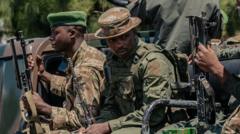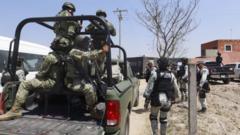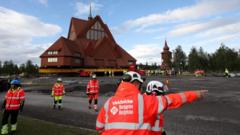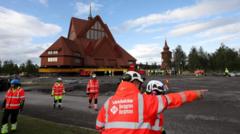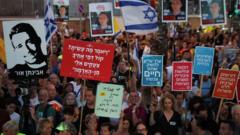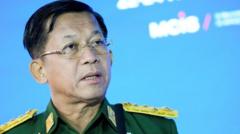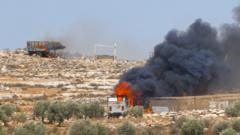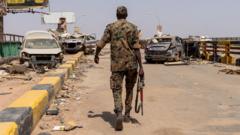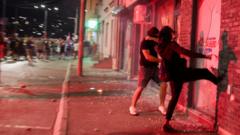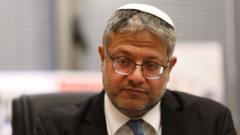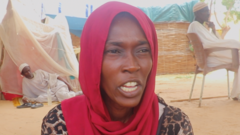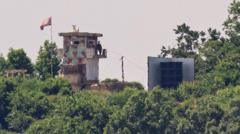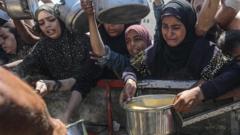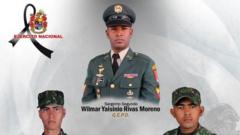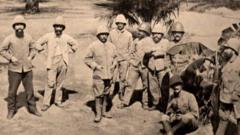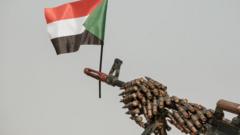As sectarian tensions rise, the Druze community in Syria grapples with feelings of isolation and insecurity. With a long-standing history of loyalty to the state, many Druze now find themselves caught in a precarious situation, fearing for their safety and struggling to find trust in a fractured societal landscape.
"Druze Community Faces Uncertainty and Fear in Post-War Syria"
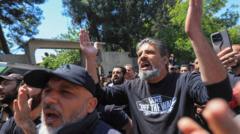
"Druze Community Faces Uncertainty and Fear in Post-War Syria"
Druze residents express growing distrust and anxiety amidst escalating sectarian violence in the aftermath of the Syrian civil war.
In Ashrafiyat Sahnaya, a suburb of Damascus, the threats grew palpably real this April, as sectarian violence unfolded rapidly. Following attacks ignited by a controversial audio recording of a Druze leader, which the government later declared as false, vigilante actions turned deadly, leading to over 100 fatalities, including both Druze fighters and government forces. Women, children, and students were left cowering in their homes as armed groups roamed the streets, delivering chilling messages of violence towards the Druze populace.
The Druze, an ethnic and religious minority with roots in a unique branch of Shia Islam, have always occupied a delicate space within Syria’s political and social framework. Historically, under the regime of former President Bashar al-Assad, many in the community remained loyal, believing that their alignment with the state would shield them from the rampant sectarian violence that engulfed much of the country during the civil war. However, as the conflict evolved and power dynamics shifted, trust in the state’s ability to protect them crumbled.
Witness accounts describe the chaos as soldiers and militia engaged in brutal assaults, with many Druze activists turning out to protect their neighborhoods amidst growing fears of diminishing security. One student, Lama Zahereddine, described the terror as she and her family navigated attacks that forced them to flee under fire, leaving her educational pursuits teetering on the brink.
Trust in the government has eroded significantly among the Druze population, coupled with a sense of betrayal from peers who trivialized their plight. Many now feel exposed, fearing not only the physical threats presented by armed groups but also the broader implications of living in an increasingly intolerant environment dominated by sectarian ideologies.
The ongoing violence has prompted a fragmented sense of identity, as many in the Druze community assert their desire for equal rights as citizens of Syria rather than being pigeonholed as a minority. Calls for accountability and justice remain unanswered, leaving many wondering what the future holds for the Druze in a nation steeped in division and uncertainty.
Despite recent efforts from Israel to protect the Druze community through targeted airstrikes, the anxiety remains palpable. Residents like Lama al-Hassanieh reflect a cautious optimism, but they step lightly in a landscape marred by broken trust and the ever-lingering threat of violence. As questions about safety and stability linger, the Druze of Syria search for assurance in a rapidly changing society, hoping for recognition as valued members of the nation they call home.
The Druze, an ethnic and religious minority with roots in a unique branch of Shia Islam, have always occupied a delicate space within Syria’s political and social framework. Historically, under the regime of former President Bashar al-Assad, many in the community remained loyal, believing that their alignment with the state would shield them from the rampant sectarian violence that engulfed much of the country during the civil war. However, as the conflict evolved and power dynamics shifted, trust in the state’s ability to protect them crumbled.
Witness accounts describe the chaos as soldiers and militia engaged in brutal assaults, with many Druze activists turning out to protect their neighborhoods amidst growing fears of diminishing security. One student, Lama Zahereddine, described the terror as she and her family navigated attacks that forced them to flee under fire, leaving her educational pursuits teetering on the brink.
Trust in the government has eroded significantly among the Druze population, coupled with a sense of betrayal from peers who trivialized their plight. Many now feel exposed, fearing not only the physical threats presented by armed groups but also the broader implications of living in an increasingly intolerant environment dominated by sectarian ideologies.
The ongoing violence has prompted a fragmented sense of identity, as many in the Druze community assert their desire for equal rights as citizens of Syria rather than being pigeonholed as a minority. Calls for accountability and justice remain unanswered, leaving many wondering what the future holds for the Druze in a nation steeped in division and uncertainty.
Despite recent efforts from Israel to protect the Druze community through targeted airstrikes, the anxiety remains palpable. Residents like Lama al-Hassanieh reflect a cautious optimism, but they step lightly in a landscape marred by broken trust and the ever-lingering threat of violence. As questions about safety and stability linger, the Druze of Syria search for assurance in a rapidly changing society, hoping for recognition as valued members of the nation they call home.

